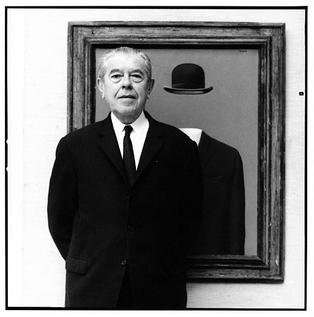Rene Magritte was born in Lessines, Belgium on November 21, 1898. His father was a tailor. His mother was a milliner, and died when Magritte was 14. Magritte was also the oldest of three boys. Rene began his art studies in the Académie des Beaux-Arts in Brussels (Royal Academy of Fine Arts of Brussels). He studied there from1916 to 1918. Magritte was the student of the world known painter, Victor Servranckx. However, Magritte became unimpressed with the institution, although he was shown to develop styles such as cubism and futurism. Eventually, Magritte began to make money by reproducing paintings by famous artists. Several of his art pieces from the early 1920s were influenced by Pablo Picasso. His career finally launched in 1927, when he had his first solo exhibition, at the Galerie Le Centaure in Brussels. As he started gaining popularity, he became famous for surrealism, furthermore his interesting images. His paintings often included humorous illustrations. Magritte had a gift for painting simple images and ordinary objects and giving them distinctive meanings. His precision and how he invoked reality through his paintings was also one of the many reasons people adored him. Rene Magritte is now one of the most prominent Surrealist painters.
Rene Magritte’s Paintings:
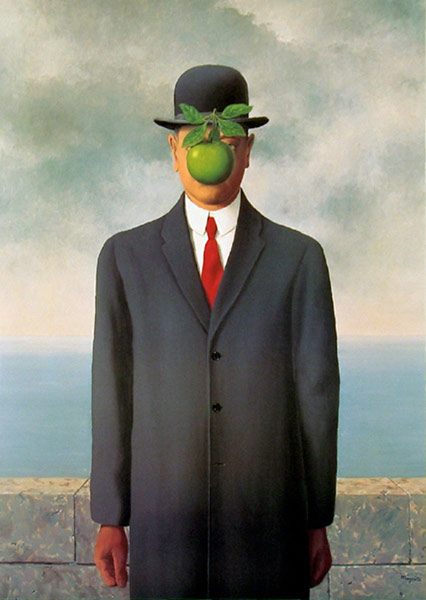
The Son Of A Man
Oil Paint on Canvas, 1964
- The Son of Man is a Belgian surrealist painting.
- Originally supposed to be a self-portrait
- The artist is trying to convey humanity from the painting
- The appearance looks similar to another painting from Magritte, resembles The Great War on Facades
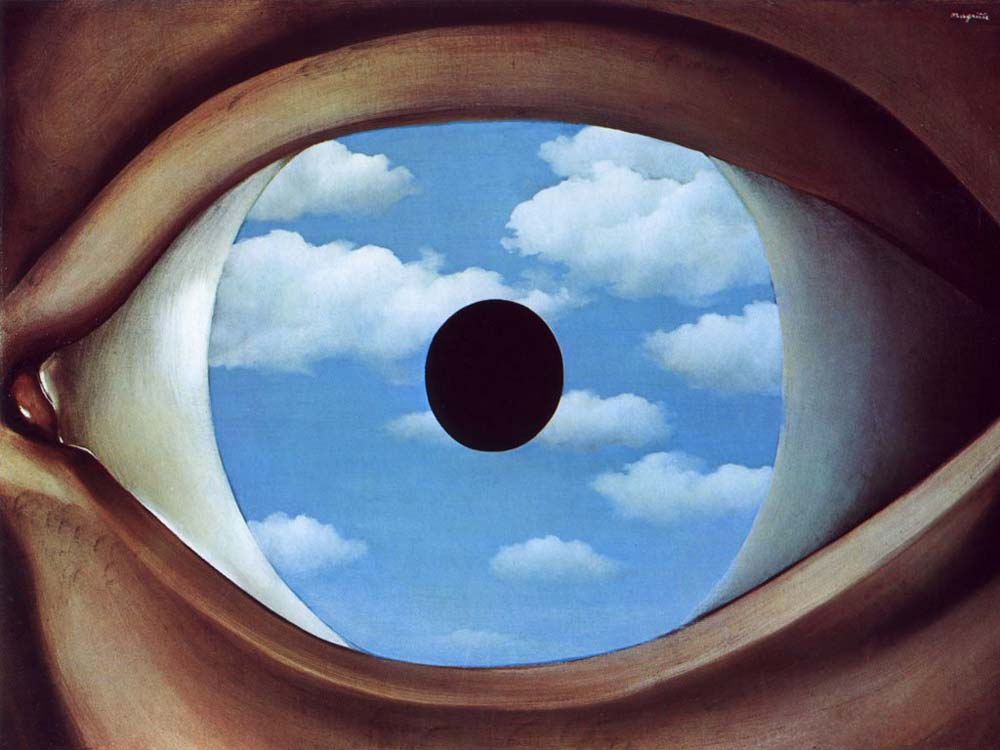
The False Mirror
Oil Paint on Canvas, 1928
- Created between World War I and World War II
-
- Currently shown at New York’s Museum of Modern Art The style of this type of artwork has also been referred to as “magical realism”
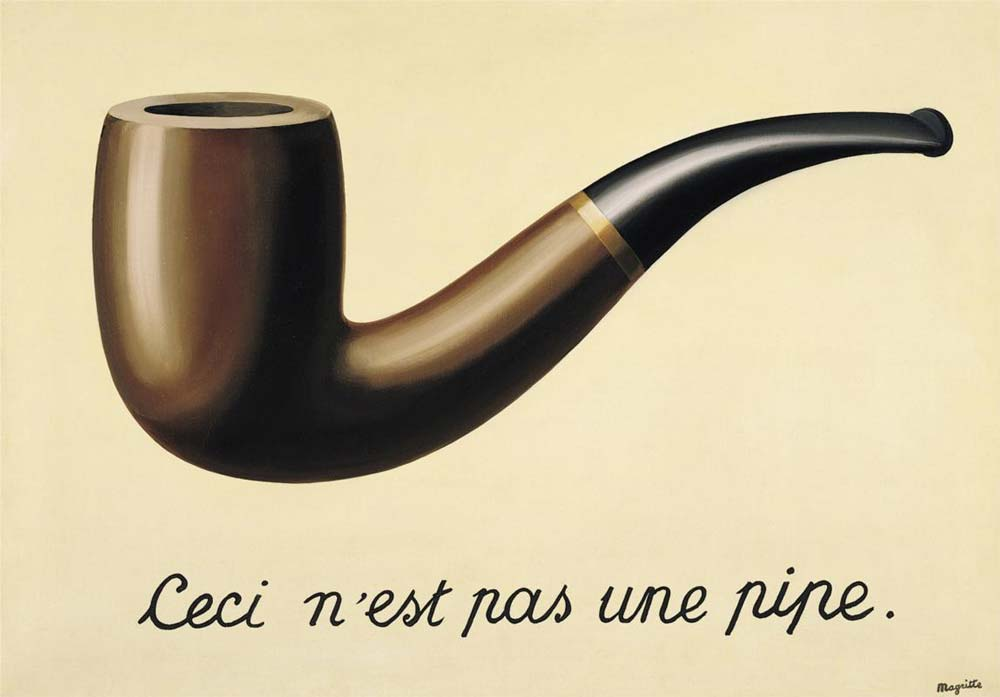
The Treachery of Images
Oil paint on Canvas, 1928-1929
- The treachery of Images is one of Magritte’s most recognizable pieces of art.
- Magritte was recognized for painting with the clarity of an advertisement in a magazine while infusing a message that causes the viewer to question their reality.
- Shows how contemporary art can have meaning
- Completed when he was only 30 years old
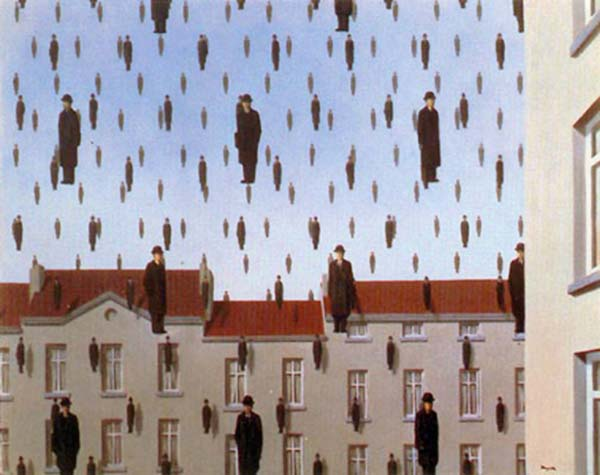
Golconda
Oil paint on Canvas, 1953
- Inspiration from a wealthy city in India, draws reference to the desire of wealth
- Even though the men seem to be the same, observing the faces the viewer is able to notice that some of the faces are different
- Magritte himself claims one of the faces
- Represents people and objects that prove how reality can be limited to how one looks at it
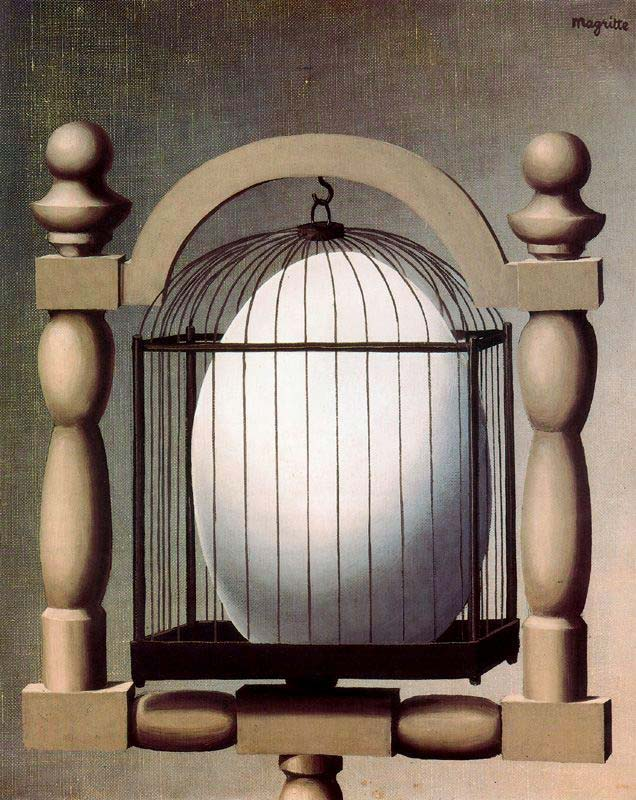
Elective Affinities
Oil paint on canvas, 1933
- It portrays that a person’s ideas are born into a solid world that is surrounded by limitations
- This concept was introduced by Johann von Goethe, a German polymath revealed the reason behind free will
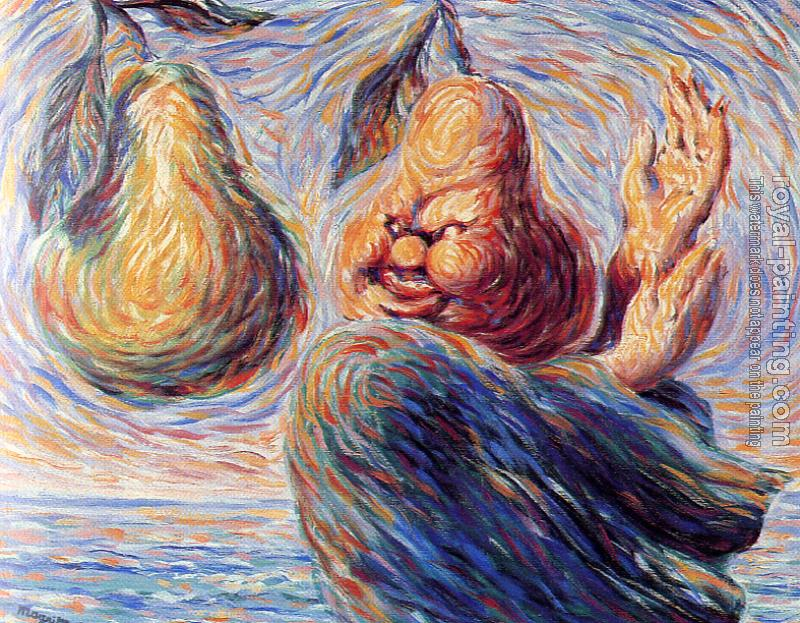
Lycism
Oil Paints on Canvas, 1947
- Many people around this time could recognize the pear-head man as French King Louis Phillipe I (1773-1850).
- King Louis Phillipe was unresponsive to his people when they demanded more economic needs and political desires.
- The painting detailed the pear with expressions that showed how he believed he had power.
Magritte’s artistic creations left both visual and mental impact on his audience. The reality is that the compositions are images or illustrations that convey a more profound importance. Magritte accomplished fundamentally in the art world, and his works of art stay pertinent because of the rich message they convey.
- Surrealist- movement in art and literature during the period between World War I and II
